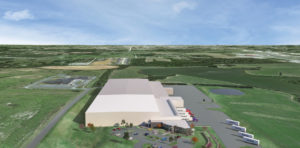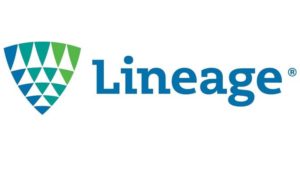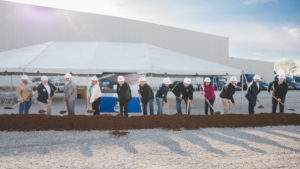As a follow up to last month’s guide popular guide, Expanding Your Footprint: A Guide for Leasing More Cold Storage Space, this guide aims to answer what to do if you find a building to occupy but it is only available for sale, not lease, and you do not have the capital available to purchase the building. Suppose you have been following along with these guides, and have explored new construction. You have looked at it from both angles, do-it-yourself, and as a tenant to a built-to-suit development, and neither works due to time or budgetary constraints. You’ve started to zero in on leasing existing space and completed an exhaustive search for available properties. Unfortunately, its slim pickings. Further, let us consider that in this hypothetical, only one availability surfaces. The location, layout and even the temperatures work. One problem: The building is for sale, not for lease. Worse, your business is not in a position, or you have no interest in the burdens that come with real estate ownership. Perhaps you have a short-term customer contract and only want to commit the business to an occupancy of matching length. Though this may initially seem like a roadblock, in actuality there are two clear and distinct paths you can take as a detour toward the destination of occupancy.
By understanding the motivations of real estate investors, including the seller of the building that has been identified, you will be able to navigate a win-win structure for all parties involved. The first option that we’ll explore is convincing the seller that it is in their best interest to lease the property to you first, before selling the property. The second option is to find a third-party real estate investor to buy the property on your behalf, while your business becomes their “tenant in tow.” Each of these paths offer unique advantages to the seller and one may stand out as an obvious choice depending on your market dynamics.
Understanding Building Valuations
Let's begin first with some background on how the market prices commercial properties. Inclusive of industrial real estate, commercial real estate is valued in a number of different ways. Occupied buildings are most likely to be measured on the income they produce. This method focuses on the net operating income (NOI) of the property and applies a capitalization rate (a rate of return on an investment, or cap rate) to it by dividing the NOI by the cap rate. For context, in the last year since we’ve been writing this article series, cap rates have ranged from 4% to 9%. The rate is dependent on factors such as the creditworthiness of the tenant, the remaining lease length and the location of the property. A lower cap rate is perceived as a safer investment, resulting in a higher purchase price, for the same amount of income. Considering that the analysis we are doing is on a vacant property, it is also important to compare the cap rate determined value with two other valuation methodologies. The first is simply a market comparison approach. What have similar buildings in similar geographies sold for? (Usually a price per square-foot value is the best metric for comparison). The other method is a cost approach. This method considers the underlying land value, as well as the value of the building and other improvements on the property. In other words, if building this building again today, on this land, how much would it cost to construct? An analysis that uses all three of these valuation methods will provide the most complete picture of the true value of the property.

Option 1: Lease From the Seller
Let’s first explore leasing the property from the seller. Why would this help or hurt the seller’s ability to sell the property? Depending on your credit, financial and brand profile, your occupancy might add value and cachet to their building. A potential buyer of a vacant building has to not only factor in the purchase and closing costs, but they also have to allocate funds toward the marketing, leasing, carrying costs and lease incentives that are necessary to find a suitable tenant for the building. It is the investor’s gamble that they will be able to find a tenant and lease at such a rental rate that their return on the overall investment, including the post-closing leasing associated costs, is compelling.
With the help of a broker, even the seller’s broker, you can determine potential rental rates. If your business is able to support that kind of rent, then it is a great argument to make to the seller that the profile of the property they are selling changes from an opportunistic investment for a buyer, to more of an investment sale with an existing income stream. What this means to the seller is that the buyer pool might now be larger with an income-producing property because the buyer will not have to take the lease-up risk. The downside however to the seller is that they will have to spend money up front to get your business into the building. They’ll have legal fees, possibly some deferred maintenance and perhaps a leasing commission payable to your broker or their broker. Another downside could be that the highest and best use of the land on which the building sits is not a cold storage warehouse. If for example the building is on infill land that can easily be sold to a multifamily or condo developer, that buyer pool might have an ability to pay more for the property as a tear down than the corresponding valuation to your proposed rent. By locking in a lease with your business, the seller removes those alternative use buyers.
Option 2: Lease From a Third Party
An alternative route is engaging with a real estate investor to purchase the property on your behalf, with the condition that you receive a lease after the transaction closes. It is important to highlight that much like choosing a developer , it behooves you as a tenant to choose an investor who is an experienced cold storage owner and asset manager. This path creates a unique opportunity for your business to “pick” its future landlord. Make sure that this landlord is familiar with the nuances of cold storage and food logistics ownership and has a stable of vendors to support the ongoing maintenance and upkeep of this building.
Let’s dive in further on the motivations of this partner buyer. The partner buyer is trying to accomplish two things at once: They are maximizing for their return on capital, while minimizing their risk exposure. Buying a vacant building, having no income, might allow for a maximum return as the purchase price might be artificially low, but it increases the risk of not having a tenant for a long time. On the other hand, buying a building with an income stream greatly reduces risk, however it decreases the odds of a major windfall, as the returns are well estimated from the start. A building purchaser with a tenant-in-tow can accomplish the best of both worlds. They can buy the building at a suppressed value and immediately plug in a tenant without any downtime or vacancy. This is the very situation you can take advantage of.
"From my vantage point as a landlord and investor in the cold storage sector, partnering with a business to acquire and tailor a facility offers a unique win-win scenario. It's not just about finding a space; it's about creating an environment that meets the operational needs of the tenant through strategic investments,” said Mark Winter-Gitelson, partner and COO of Yukon Real Estate. “By capitalizing these costs, we can keep the tenant's occupancy and operational costs lower, which is a significant advantage for them. This approach not only ensures a high-quality facility for the tenant but also solidifies a strong, mutually beneficial relationship between tenant and investor."

Would you like to be alerted when new Farm to Frozen articles are posted?
Sign up to receive our eNewsletter, What's HOT in COLD! This weekly eNewsletter showcases the latest trends, news technologies and products impacting the refrigerated, chilled and frozen segment. It also includes a notice when new Farm to Frozen content drops! Sign up now to get on the list!
After understanding what the market rent should be on the vacant building you’ve identified, it is possible to approach a buying partner with an agreement to lease the building at this market rent (or slightly below market because they’re saving money and time on lease-up) after they are able to consummate the purchase of the property. The seller walks away happy because they sold the building as is, at their asking price and without having to spend money on lease-up. The buyer is happy because they bought an investment property with a known income stream at a purchase price that likely reflects a vacant building. And most importantly, you’re happy because you have secured occupancy through a lease and without having to purchase a building.
Conclusion
In this market, leasing an existing facility continues to be a more flexible and cost-effective option for businesses versus buying or developing a new cold storage facility. Leasing will allow the business to save much-needed capital and deploy it in a growth manner rather than on real estate. By cleverly considering the motivations of real estate investors, occupiers can take advantage of investor’s appetite without having to come out of pocket on a building purchase. All of this is much easier said than done, however if accomplished, an occupier can find themselves in a very advantageous position for years to come. As with the previous guide, it is recommended to utilize the right partners. Having a tenant representation broker and an experienced real estate attorney in your corner can help make this method of obtaining more cold storage space a success.








